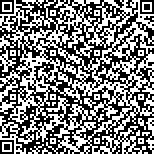| 本文已被:浏览次 下载次 |

码上扫一扫! |
|
|
|
| Experimental research on ultrasonic method based on laboratory measurement for accurate estimation of shear wave velocity |
|
WEI Jian-xin1,2,3,DI Bang-rang1,2,3
|
|
(1. State Key Laboratory of Petroleum Resource and Prospecting in China University of Petroleum, Beijing 102249, China;2. CNPC Key Physical Exploration Laboratory in China University of Petroleum, Beijing 102249, China;3. College of Geophysics and Information Engineering in China University of Petroleum, Beijing 102249, Chirm)
|
| Abstract: |
| Through P-and S-waves transducers with various vibration characteristics and diameters, the measurement accuracy of huge size samples with different internal structures was studied by three kinds of ultrasonic measurement techniques. The experimental results show that the measurement accuracy of shear-wave velocity is greatly influenced by internal structure of rock samples and measurement methods. Compared with other measurement methods, transmission method can obtain relatively high measurement accuracy of shear-wave velocity, and important information relative to anisotropy and heterogeneity of rock samples is also contained in the measurement process. As an indirect measurement method, shear-wave transducers can be used to perform the measurement of shear-wave velocity. The measurement technique can only obtain the average velocity of shear waves. Noticeably, the accuracy by indirect measurement method is greatly affected by internal structure of rock samples and the vibration characteristics. A solution to improving the measurement accuracy is to select a transducer with proper frequency and small diameter, and to use stronger emission energy. |
| Key words: shear-wave velocity measurement rock samples indirect measurement method ultrasonic transducers measurement accuracy analysis |
|
|